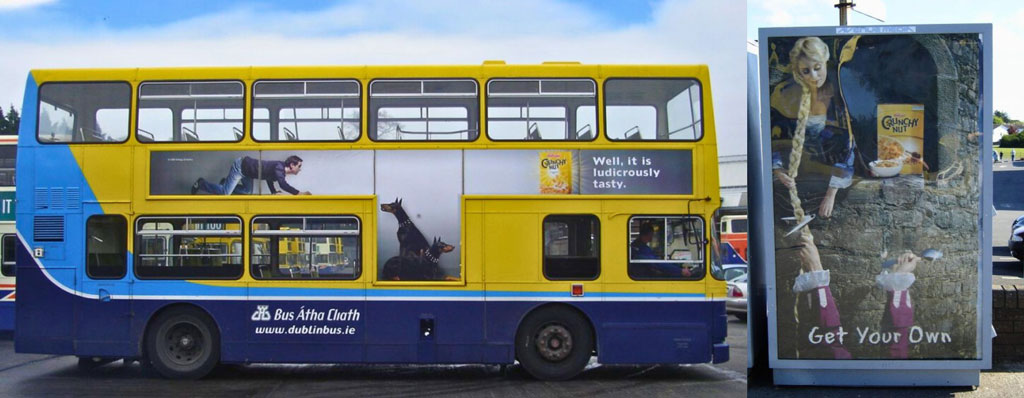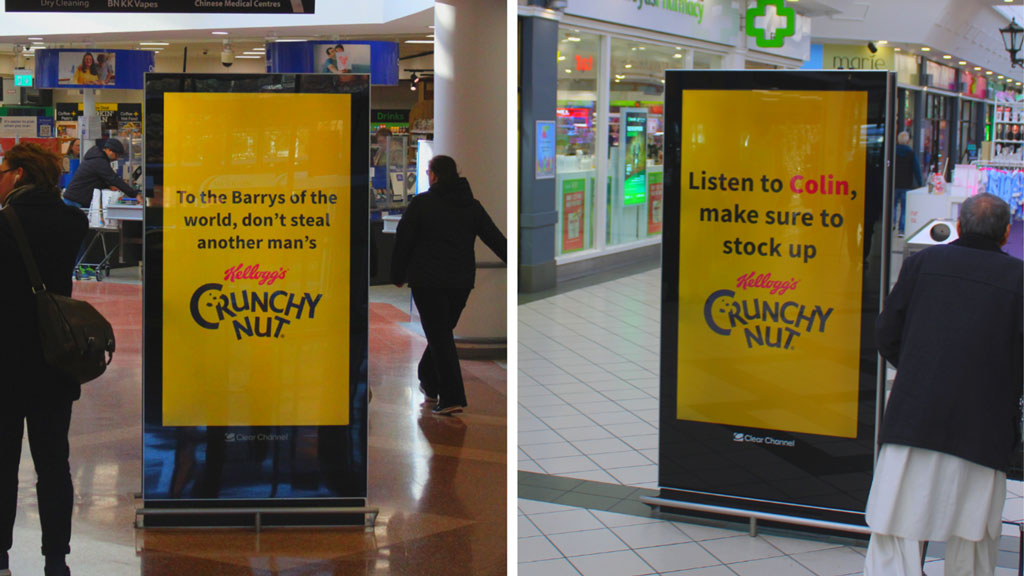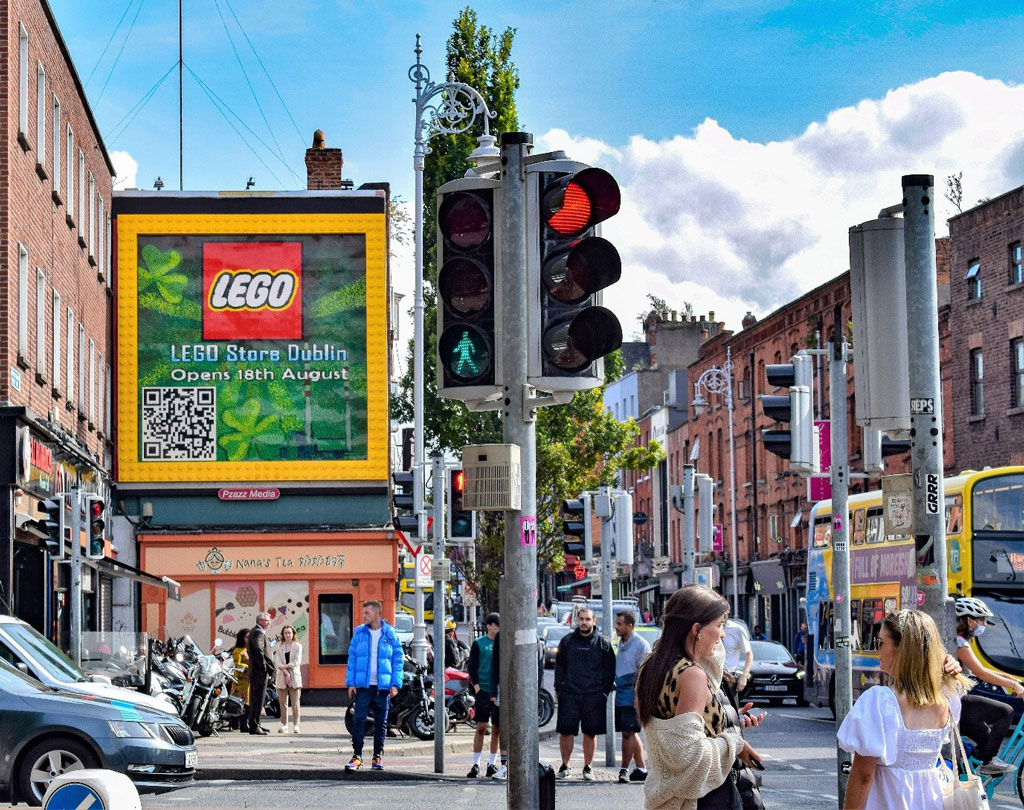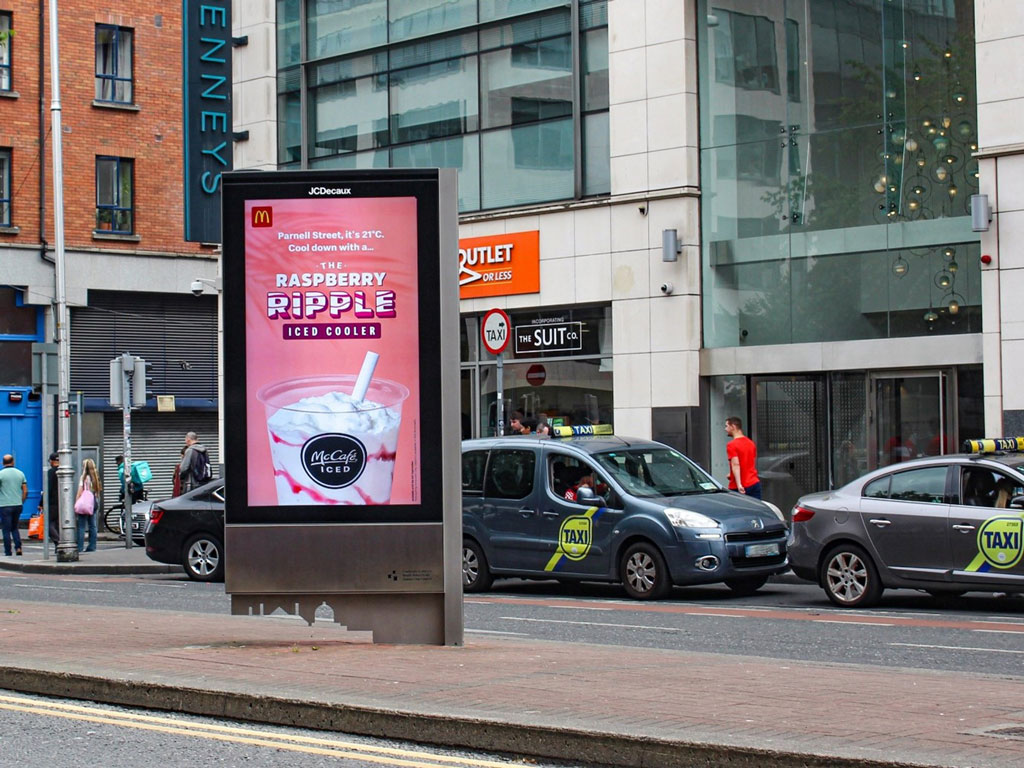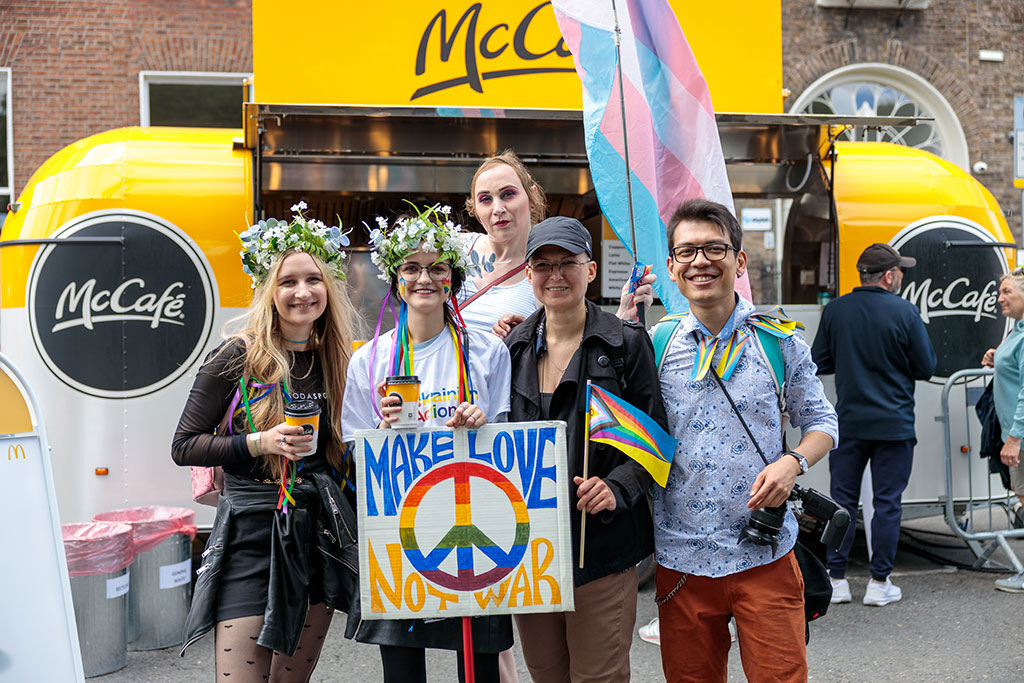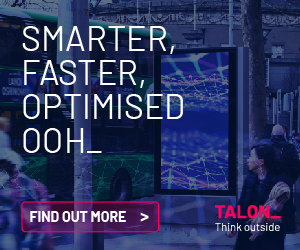Aaron Poole, marketing executive, PML Group with this week’s Out \ Look on Out of Home.
As part of our 2023 Planning Guide, PML Group published Touchpoints – our holistic overview of trends we consider to be of importance on OOH this year. As part of those trends, we examined how brands can play to OOH strengths as a trusted channel for both brand building and performance. Today, we take a deep dive into the brand power than can be generated when Outdoor is effectively leveraged.
Bringing Brands to Life on OOH
In 2023, Out of Home’s brand capabilities are stronger than ever. As a brand stage, Outdoor has been well documented as being the best medium for matching creative ambitions with high quality, classic formats working alongside modern and attractive Digital Out of Home networks. Modern OOH advertising has both the audience and creative opportunity to effectively build brands over long-term use. Data and technology are also now providing the basis to optimise both. This channels the communication of multiple brand characteristics toward the right audience at the right time and in the right place, ultimately aiding brand growth and commercial success.
In Byron Sharp’s seminal ‘How Brands Grow’ he discusses how for a brand element to become a distinctive brand asset it needs to:
- Be unique and distinctive – the element must make your target audience think of your brand, and not your competitors.
- Stand out – attract attention of your target audience and stand out from the crowd.
- Be well-known – enough of your target audience must associate the brand element with your business to make it a valuable asset.
In adopting the premise that a brand’s growth is driven by acquiring new and light buyers, rather than by driving loyalty from existing heavy customers, a brand’s focus should be on reaching as many people as possible.
Out of Home is always-on, no clutter, no filter, no off switch – pure advertising. But to get to the point where Outdoor might be used effectively as a brand tool, it’s important to understand the importance of ‘brand’ to begin with. We’ve highlighted that 2023 will be a battle of brands, where the best creative idea and execution will ultimately win the favour and, more importantly, attention of their target consumers. In this regard, understanding how to use your brand as more than a logo will be a key challenge to overcome in order to channel great storytelling through Outdoor media.
Brand Understanding
It’s important to understand what it means not just to brand an offering, but to understand and own it. To take ownership of its importance in the lives of its target consumer and reinforce it.
In the context of the most menial items in our day-to-day, right through to the most important, a well-executed and well-understood brand strategy will make clever use of a trickle-down infusion of iconography, personality, and consistency, and combine those with routine elements of our daily lives.
Additionally, the best practices of brand execution enable brands to channel messaging to their target audiences. Subtle, yet effective product-seeding deployed in relatable environments can augment consumer perception of those environments by playing on their latent wants and needs.
By incorporating social and communitive elements into creative, you generate authenticity, relatability, and trustworthiness which generates better brand perception. Adopting a slogan further communicates the brand’s individuality and purpose, enabling better positioning relative to messaging to be attained.
To illustrate these practices let’s take an example that is more recent, imprinting on international audiences thanks to Colin and Barry: Kellogg’s Crunchy Nut Cornflakes.
Kellogg’s Crunchy Nut: An Opportune Moment
“The trouble is they taste too good” – the story of how eating a breakfast cereal became one of the most clever branding strategies of the past 40 years.
How do you make something as common as corn flakes seem like the most important thing at your breakfast table? You tell them it’s important. You craft the story in a social setting, tell it with confidence, and build an identity that your consumers can relate to with your product at the heart of your messaging.
In many ways, at this point in the brand’s lifecycle, Kellogg’s Crunchy Nut has instilled a sense of importance surrounding the brand that could never have been predicted – a hedonic reward at the kitchen table that you don’t just want, you crave. Something you’d be willing to steal from the people closest to you and keep close to your chest, which has been effectively communicated through Outdoor as a leading narrative.
When the inevitable happened and the narrative became a real-world story, the brand was quick to embrace their opportune moment.
When graced with unexpected exposure on the world stage, it was revealed the breakfast cereal was the preference of some of Ireland’s biggest movie stars…and that the cereal was the subject of light-hearted theft between them.
Understanding this golden opportunity for brand building, and with Outdoor as their brand canvas, Kellogg’s were able to react quickly using the flexible power of Digital Out of Home and take ownership of the circulating PR.
The simple campaign was featured a pair of creatives displaying across DOOH panels, humorously prompting customers to ‘Listen to Colin’ and stock up on the coveted crunchy flakes.
The audience understood the narrative underlying the commodity, and now there was a real-life connection to that narrative. By embracing the cultural zeitgeist in quick time and reacting in alignment with the brand’s signature tongue-in-cheek tone, the campaign was picked up by news outlets and social media alike. This even led to actor Barry Keoghan sharing photos of the campaign to his Instagram story, further exposing Crunchy Nut to more than 900,000 of his global followers.
Understanding their brand and effectively leveraging the power of Outdoor opened up a unique opportunity for Kellogg’s, infusing their iconography and personality into a reactive campaign that was in perfect alignment with their audience.
LEGO: Building Brand Awareness
By incorporating social and communitive elements into brand strategies, you generate authenticity, relatability, and trustworthiness which ultimately results in better brand perception.
Since the COVID-19 pandemic, LEGO had experienced a surge in popularity among adults both globally and in Ireland as it entertained consumers in a meditative and mindful way. When they wanted to open their first Irish store in 2022, the Danish toy producer had the task of driving brand and store awareness to maximise footfall during the store’s opening weekend.
The building blocks for LEGO’s brand strength have always been present. Its appeal spans generations; as well as the creative freedom it gives children, the brand taps into the nostalgia of adults. By appealing to everyone equally, the brand maximises the size of its target demographic.
Understanding Outdoor to be the best channel to raise awareness and build brand perception, the brand decided to construct a 3D special build. To solidify LEGO’s place in the Irish community, the idea of constructing the creative from actual LEGO bricks was born, but not by an organisation – by the fans, being seen as the perfect way to engage the right audience, incorporate social and communitive elements, and generate trustworthiness and awareness.
Subtle yet effective product-seeding, deployed in relatable environments, can augment consumer perception of those environments by playing to their latent wants and needs. By having the build as part of the events for Dublin Comic Con – a communal space where creativity and self-expression are in abundance – there was an impetus for prospective consumers to get involved while generating positive brand connotations and making them aware of the upcoming store launch. The process effectively generated new consumers by putting brand-in-hand to over 600 people who were willingly engaged in the activity.
This worked effectively in generating interest once the build was installed. On the morning of the store opening, LEGO was the number 1 trending topic on Irish Twitter, with 21,000 tweets mentioning the brand, including those from other LEGO user groups, posing with delight at the sight of the many Irish-themed builds on display in-store.
By understanding how LEGO is anticipated by consumers as a true ‘it’s for everyone’ product, the brand was able to build both increased trust and anticipation for the new store among existing audiences while generating interest from those who observed. The brand lived out its ‘from ages 4-99’ tagline in the best way it could – by inviting those whom LEGO matters to most to express their passion and excitement under the invitation of the brand they care about so much, all involved in a truly unique piece of Outdoor history in Ireland.
McDonald’s: The Power of Presence
Byron Sharp notes brands grow by focusing on new customer acquisition, driven by increasing mental and physical availability, resulting in behaviourally loyal buyers.
At PML Group, there’s always one name that tops the conversation surrounding successful brand building – McDonald’s. Without fail, the Golden Arches continue to generate high recall, generating physical and mental availability no matter what derivative or product is being advertised. And why?
Through Outdoor, McDonald’s have raised the bar in terms of creative excellence and continue to set a new standard for marketing innovation in their sector. They’re everywhere. Their advertising is omnichannel and creative always fresh. By combining classic and innovative elements in their media plans – like their weather/time of day triggered dynamic during the summer of 2022 – they continue to reach their audience and further embed themselves in the daily lives of new and potential consumers.
By their own admission, this has led to the company generating unrivalled brand power. The results of their self-touted marketing excellence are hard to argue with. This became more obvious than ever when they decided to increase awareness and reach of their McCafé product line via the creation of a new experimental-led campaign that brought McCafé on a road trip to the consumer – the McVan.
The McCafé mobile Airstream – dubbed the ‘McVan’ – was a coffee dispensing vehicle that travelled the across Ireland for deployment at key events and festivals, such as Dublin Pride, handing out than coffees to delighted consumers while aligning the food brand with the positive connotations that emanated from those events.
By virtue of pushing past the restaurant doors, McDonald’s proved they weren’t just content with their brand prowess. The Golden Arches are not just a brand – they are a symbol. By infusing their iconography and personality with relatability – whether it surrounds the weather, providing a familiar service at a concert, or being a supporting symbol at important social discussions, the presence of the brand has generated trustworthiness and aligned it with a sense of individuality and purpose. Combine those with its regular presence across more routine elements of our daily lives in a consistent manner, and it can be seen that the restaurant chain has generated brand power that is desirable.
Brands in Action
Crunchy Nut Corn Flakes, LEGO, and McDonald’s created a ‘brand buzz’ about themselves that, given their clever use of iconography, personality, and consistency, turned their offerings into something you related to – things that belonged in your social environment and were worthy of your hard-earned money.
However, brand teams wanting to ‘do’ a Kellogg’s or McDonald’s may have an incredible task ahead of them if they don’t immediately see results, leading them to either conservatively or aimlessly spend on omnichannel media, or dare to go too far with their messaging and take their brand narrative into contentious space. All went just far enough to be original and innovative, recognising that Outdoor was the most effective means to effectively do so.
Similarly, as mentioned in Touchpoints, the challenging period the world is facing might see cutbacks in ad spend, which can cause longer-term brand damage.
In the case of scale, there is a happy medium when it comes to brand meaning that is larger than life without core messaging. It’s called strategic patience. When it came to LEGO, the notion of putting thousands of individual product pieces into the consumer’s hands in such a manner might drop jaws in C-Level boardrooms, with the notion of resulting expenses being too great. But the product itself was not the issue – rather to bring that product into a new realm of distinctive, relevant meaning. Understanding how that would work was what turned a thought into a strategic move.
The next step is to channel that meaning to the consumer in the best way possible, and it would be remiss to not mention the advantages of Out of Home in that regard. The media’s infrastructure is designed around patterns of consumer behaviour, targeting triggers around context, locations and communities. As noted in Touchpoints, it just works better for brand building. It cannot be avoided on the frontline of everyday life and cultural zeitgeists. It’s unmissable, spanning multiple environments with contextually nuanced opportunities to hold conversations with audiences, whatever their current mood.
Looking back at any of these examples, this medium is designed to deliver for advertisers using iconic sites and enable big brand messaging at scale. What’s exciting, is not only is the medium the most effective at delivering the big message; dynamic display, enhanced inventory, new technologies and creative innovations are enhancing the ability for OOH to be a truly unique media in a league of its own.
















